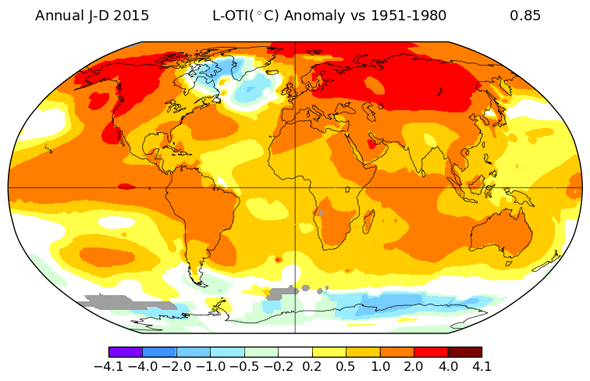Create a free profile to get unlimited access to exclusive videos, sweepstakes, and more!
If Global Warming Is Real … Why Is Iceland So Cold?

Over the past few years I’ve heard a lot of nonsensical claims from climate science deniers: The Earth isn’t actually warming, carbon dioxide isn’t a significant greenhouse gas, CO2 is good for plants, and more.
Most of them are trivially easy to debunk; I suspect the reason people use them at all is to score a cheap political point or to throw red meat at their audience, rather than to make some deep, meaningful attack on the reality of global warming.
But every now and again one comes up that isn’t so trivial. Mind you, the deniers are still wrong, but sometimes a wrong claim can lead to a deeper understanding. And this one in particular was a new one to me.
On Twitter the other day, climatologist Michael Mann mentioned a denier trying to debunk global warming by saying that Iceland was having a record cold wave.
Mind you, in general this is trivial to debunk. There are two words in the phrase “global warming,” and one of them is global. Averaged over the entire planet, temperatures are going up. But there will always be some places, over some period of time, which will get colder. Even get record cold snaps!
But that area near Iceland is special.
The map above shows global temperature anomalies for 2015, deviations from the average (where the average is calculated over the baseline of 1951–1980). As you can see, most of the Earth was much warmer than average, but there’s a cold blob off Iceland and Greenland.
It turns out this blob is not just some random fluctuation. In fact, counterintuitively, global warming predicts this cold spot! Peter Sinclair, who makes very well thought-out and simple climate change videos, made an excellent one last year explaining this pretty clearly:
In a nutshell, there’s a flow of water in the Atlantic Ocean that brings cold water down from the polar region, and warm water to the poles. It’s called the Atlantic Meridional Overturning Circulation, or AMOC, but you can think of it as a conveyor belt of heat. It depends on a lot of factors, but it turns out one very strong influence is how salty the water is. Fresh water is less dense than salt water and floats on top of it.
This is where global warming kicks in. As ice melts off Greenland, a lot of cold fresh water gets dumped into the north Atlantic—hundreds of billions of tons per year. This floats on the surface, acting like a lid on the AMOC. The warmer water gets blocked, and this slows down the conveyor. That area near Iceland stays cold.
The scary thing here is that this system drives a huge chunk of the world’s climate. If the conveyor shuts down completely, that could spell catastrophe for the planet. This is one of the “tipping points” climatologists talk about; a relatively sharp moment in time when things change dramatically. Temperatures are rising methodically but relatively slowly, and many of the other changes we see can take centuries. But something like this could change in the course of decades, depending on how much and how rapidly ice melts.
Update, Mar. 22, 2016: Climatologist James Hansen and many colleagues have just published a paper talking about this issue, and have issued what can only be called a dire warning that sea level rise and the stalling of the AMOC could be far worse than we thought. This idea is not without controversy, but it's important to be up-to-date on it. My Slate colleague Eric Holthaus has the details.
I know a lot of climate science deniers pooh-pooh the idea that global warming can have effects that make things colder (like increasing snow over Antarctica, because warmer air can hold more moisture), but it’s a case where, as usual, deniers gloss over details, cherry-pick data, and oversimplify the situation.
The thing is, climate is complex. And in general, the more complex a system is, the harder it is to recover when it’s pushed off balance. Where are we now in that balance, and how close are we to that tipping point?


























